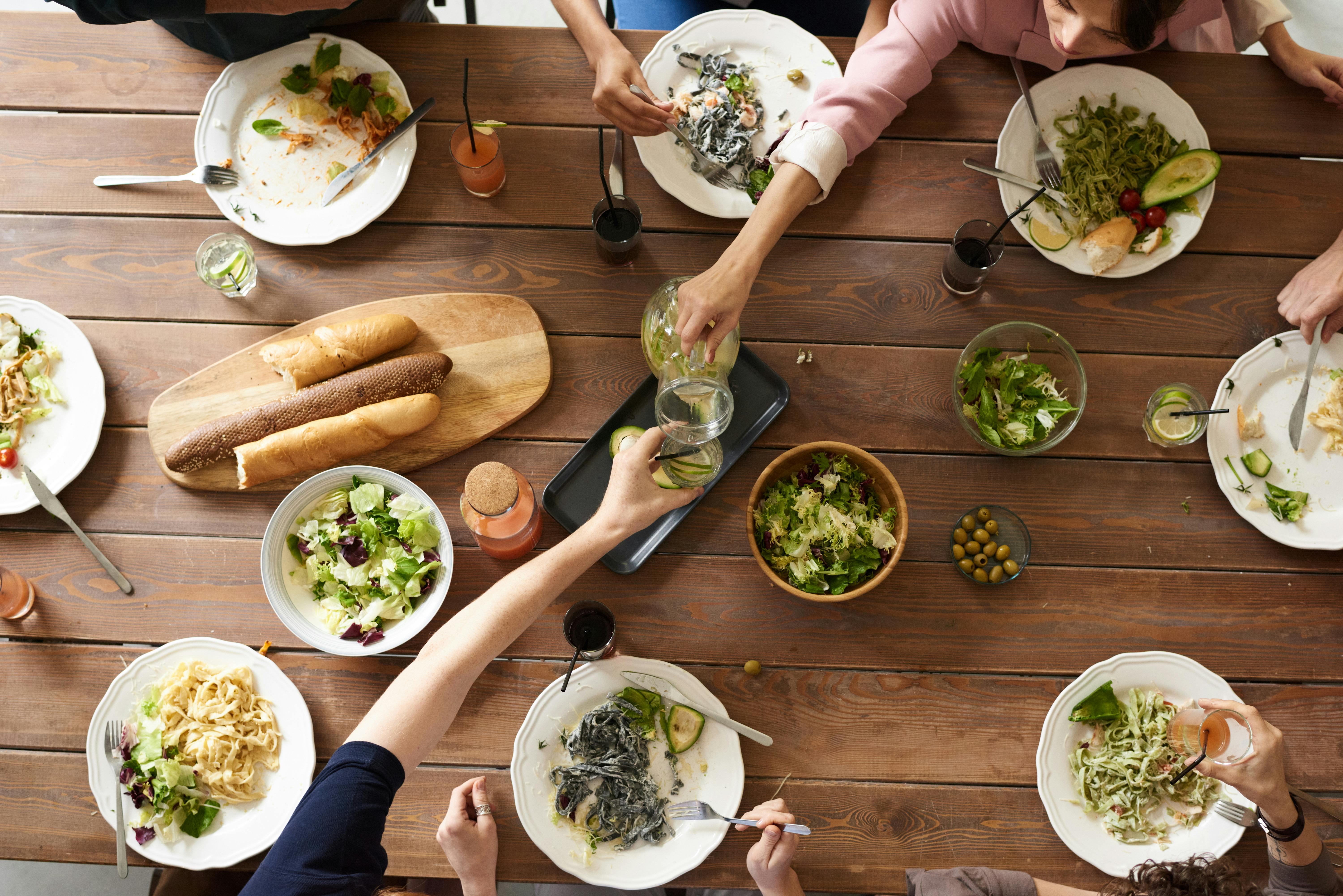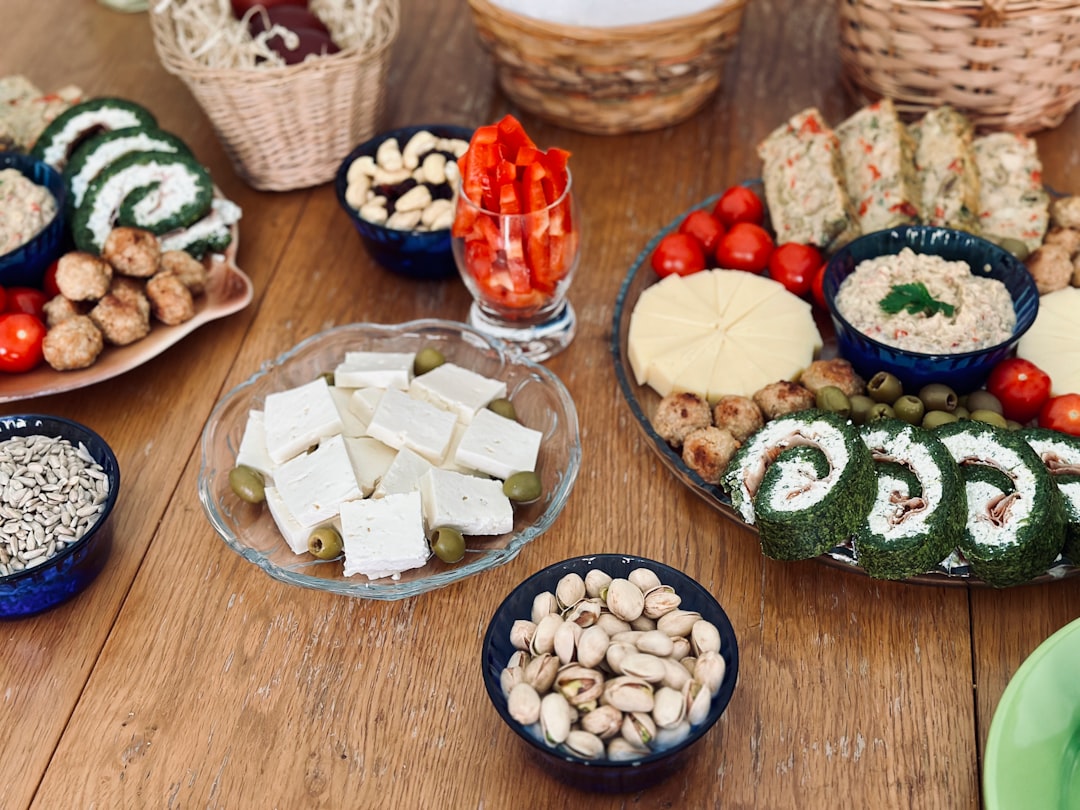Have you ever noticed how a particular dish can instantly transport you back in time, evoking cherished memories and a deep sense of belonging? That’s the magic of traditional food! It’s more than just sustenance; it’s a vibrant tapestry woven with history, identity, and community. In a world that’s constantly evolving, our connection to these culinary roots remains stronger than ever. Let’s dive into the fascinating world of traditional foods and explore their enduring appeal and exciting future! 😊
The Heart of Heritage: Why Traditional Foods Matter 🤔
Traditional food is a living connection to our past, serving as a cultural anchor and a profound source of identity for communities worldwide. Think about the aroma of your grandmother’s kitchen or the specific taste of a local dish from your hometown; these are all threads woven into the rich fabric of food heritage. These foods are deeply embedded in customs, rituals, and the daily lives of societies, reflecting history and forming the basis for celebrations and social connections.
Beyond their cultural significance, traditional foods often boast inherent nutritional properties, making them a healthier alternative to many processed options. Many traditional diets emphasize locally adapted ingredients and unique preparation methods, contributing to dietary diversity and sustainable agricultural practices.
Traditional food systems often have a smaller ecological footprint compared to modern industrial agriculture, promoting biodiversity and supporting sustainable practices.
A World of Flavors: Iconic Traditional Dishes 📊
Our planet is a treasure trove of diverse culinary traditions, each telling a unique story through its flavors, ingredients, and preparation. From bustling street food stalls to elaborate family feasts, traditional dishes offer a window into a culture’s soul. Here are just a few examples of beloved traditional foods that continue to captivate palates globally:
- Italian Neapolitan Pizza: A timeless classic, globally loved for its authentic wood-fired crust and simple, fresh ingredients like San Marzano tomatoes, mozzarella di bufala, and basil. It consistently ranks among the most popular foods worldwide.
- Mexican Tacos: These versatile handheld delights are at the heart of Mexican cuisine, blending indigenous and Spanish influences. Whether it’s smoky Al Pastor or tangy Carne Asada, tacos are a go-to for food lovers.
- Japanese Sushi/Ramen: Japanese cuisine is celebrated for its precision, fresh ingredients, and perfect balance. From melt-in-your-mouth sushi to comforting ramen, these dishes embody a dedication to detail and flavor.
- Indian Biryani/Butter Chicken: India’s rich and diverse cuisines vary by region. Biryani, a fragrant rice dish, and Butter Chicken, a creamy tomato-based curry, are beloved across the country, showcasing a vibrant mix of spices and flavors.
- Korean BBQ: Known for its bold flavors and interactive dining experience, Korean BBQ, featuring sizzling beef short ribs (Galbi) and thinly sliced pork belly (Samgyeopsal), continues to grow in popularity.
These dishes are more than just recipes; they carry stories and memories, creating a sense of belonging and connecting people across generations and cultures.
While these are some of the most recognized, every country and region boasts countless unique traditional dishes. Exploring local eateries and food festivals is the best way to discover hidden culinary gems!
Key Checkpoints: What to Remember! 📌
We’ve covered a lot of ground already! To make sure you don’t miss the most important takeaways, here are three key points to keep in mind:
-
✅
Cultural Identity & Connection:
Traditional foods are fundamental to cultural identity, preserving history, and fostering community bonds across generations. -
✅
Global Diversity & Richness:
The world’s traditional cuisines offer an incredible array of flavors and techniques, from Italian pizza to Korean BBQ, each with its own unique story. -
✅
Nutritional & Environmental Benefits:
Beyond taste, traditional foods often provide vital nutrients and support sustainable, local food systems.
Traditional Tastes, Modern Twists: 2025 Food Trends 👩💼👨💻
The world of traditional food isn’t static; it’s constantly evolving, influenced by global trends and a renewed appreciation for authentic experiences. In 2025, we’re seeing exciting developments that blend heritage with innovation.
The Rise of Culinary Tourism
Food tourism is experiencing a significant boom. The global food tourism market was estimated at USD 967.6 billion in 2025 and is projected to reach USD 3636.76 billion by 2033, growing at a robust CAGR of 18%. Travelers are increasingly seeking authentic culinary experiences as a core part of their journeys, exploring diverse cuisines, dining at local eateries, attending food festivals, and participating in cooking classes.

This trend is driven by a desire for cultural exploration and the growing influence of digital food content, with Generation Y leading the charge, exhibiting adventurous palates and a demand for immersive experiences.
“Tradition Reinvented” and Fusion Flavors
Consumers in 2025 are actively seeking “Food Culture: Tradition Reinvented,” demanding authentic global cuisines made with local ingredients, familiar flavor profiles, and traditional cooking techniques. This doesn’t mean sticking strictly to the old ways; rather, it’s about creative adaptation. Traditional dishes are “ripe for fusion and unexpected mash-ups,” leading to exciting innovations like Korean-inspired bulgogi tacos.
Plant-Based and Heritage Flavors
The plant-based movement continues to influence traditional cuisine, with plant-based versions of classic dishes gaining traction. There’s also a strong resurgence in regional spices and heritage flavors, with a renewed interest in traditional cooking methods like open-fire grilling, which offers smoky, complex flavors.
The “Omnivore” trend for 2025 focuses on “less and better” animal-based products, with a strong emphasis on simple, high-quality ingredients and sustainable sourcing.
Safeguarding Our Culinary Legacy: Challenges and Solutions 📚
Despite the growing appreciation, traditional food systems face significant challenges in our rapidly changing world. Preserving this heritage is crucial for maintaining cultural identity and community connection.
Major Challenges
- Globalization and Industrialization: Mass-produced food, often cheaper and more readily available, can overshadow local ingredients and traditional dishes, leading to a decline in their consumption and production. Over 70% of culinary traditions are reportedly on the brink of extinction within the next century due to the rise of fast food and industrialized production.
- Changing Lifestyles: Modern, fast-paced lifestyles often leave less time for traditional cooking, which can be labor-intensive and require specific techniques.
- Loss of Intergenerational Knowledge: The skills and knowledge needed to prepare traditional dishes, once transmitted organically within families, are at risk of being lost as younger generations move away from rural areas or adopt Western diets.
- Disconnect between Producers and Consumers: Urban populations, increasingly distanced from food production, may lack awareness of the origins and cultural significance of traditional foods.
Preservation Efforts and Solutions
Addressing these challenges requires a multi-faceted approach that involves supporting local communities, promoting education, and advocating for policies that protect traditional food systems.
- The Slow Food Movement: This global movement actively seeks to preserve traditional, local, and sustainable food practices in response to industrialization and globalization.
- Education and Cultural Events: Revitalizing traditional food systems through education, cultural events, and local initiatives helps reconnect people with their heritage and promotes intergenerational knowledge transfer.
- Supporting Local Producers: Policies and initiatives that support traditional food producers and create markets that value their products are crucial.
- Traditional Preservation Methods: Ancient techniques like fermentation, drying, salting, pickling, and smoking are vital for extending shelf life, enhancing nutritional value, and preserving cultural heritage. These methods are often more environmentally friendly than modern industrial processes.
- Blending Tradition with Innovation: Modern advancements like vacuum sealing and controlled atmosphere storage can be leveraged with traditional methods to enhance nutritional value and flavor retention, creating a comprehensive and sustainable approach to food preservation.
Case Study: The Enduring Art of Fermentation 🧪
Fermentation is one of the oldest and most versatile methods of food preservation, used across countless cultures for millennia. It involves encouraging the growth of beneficial bacteria or yeasts that convert sugars and starches into natural preservatives like acids or alcohol.
Benefits of Fermentation
- Enhanced Flavor: Creates deep, complex flavor profiles (e.g., kimchi, sauerkraut, miso).
- Improved Nutrition: Boosts the nutritional profile, increasing bioavailability of vitamins and supporting gut health through probiotics.
- Extended Shelf Life: Naturally inhibits spoilage without refrigeration or artificial preservatives.
Global Examples
– Kimchi (Korea): Fermented cabbage and other vegetables, a staple of Korean cuisine.
– Sauerkraut (Germany): Fermented shredded cabbage, a classic European side dish.
– Miso (Japan): Fermented soybean paste, essential for Japanese soups and marinades.
The continued practice and innovation in traditional preservation methods like fermentation demonstrate a powerful way to honor our culinary past while building a more sustainable food future.
Wrapping Up: A Taste of the World 📝
As we’ve journeyed through the world of traditional foods, it’s clear that these culinary treasures are far more than just meals. They are the heartbeats of cultures, the threads of history, and vital components of our global identity. From the bustling markets of Asia to the cozy kitchens of Europe, traditional foods connect us, nourish us, and inspire us.
Let’s continue to celebrate, explore, and support the incredible diversity of traditional cuisines around the world. By doing so, we not only savor delicious flavors but also help preserve a priceless part of humanity’s heritage for generations to come. What’s your favorite traditional dish? Share your thoughts in the comments below! 😊
Global Traditional Food: Key Takeaways
Frequently Asked Questions ❓
